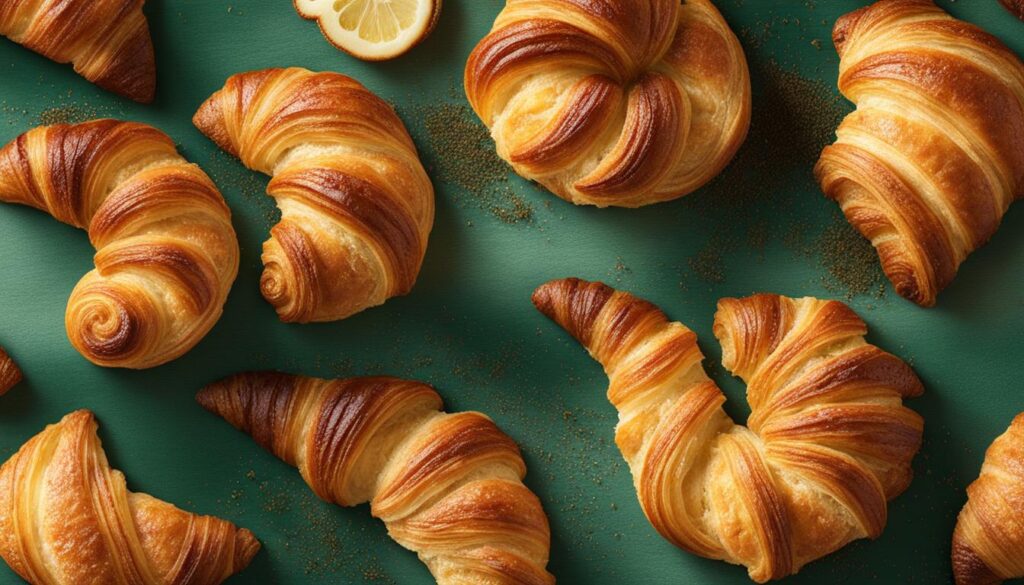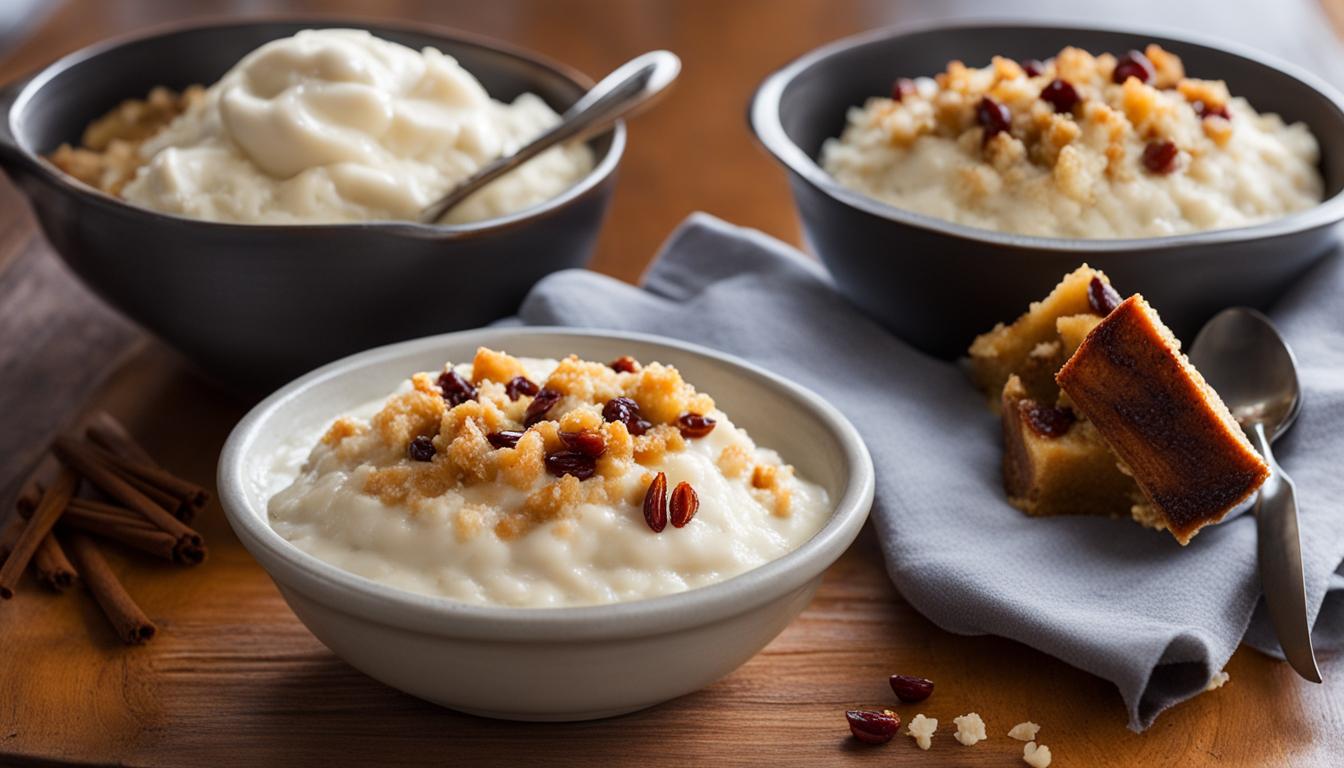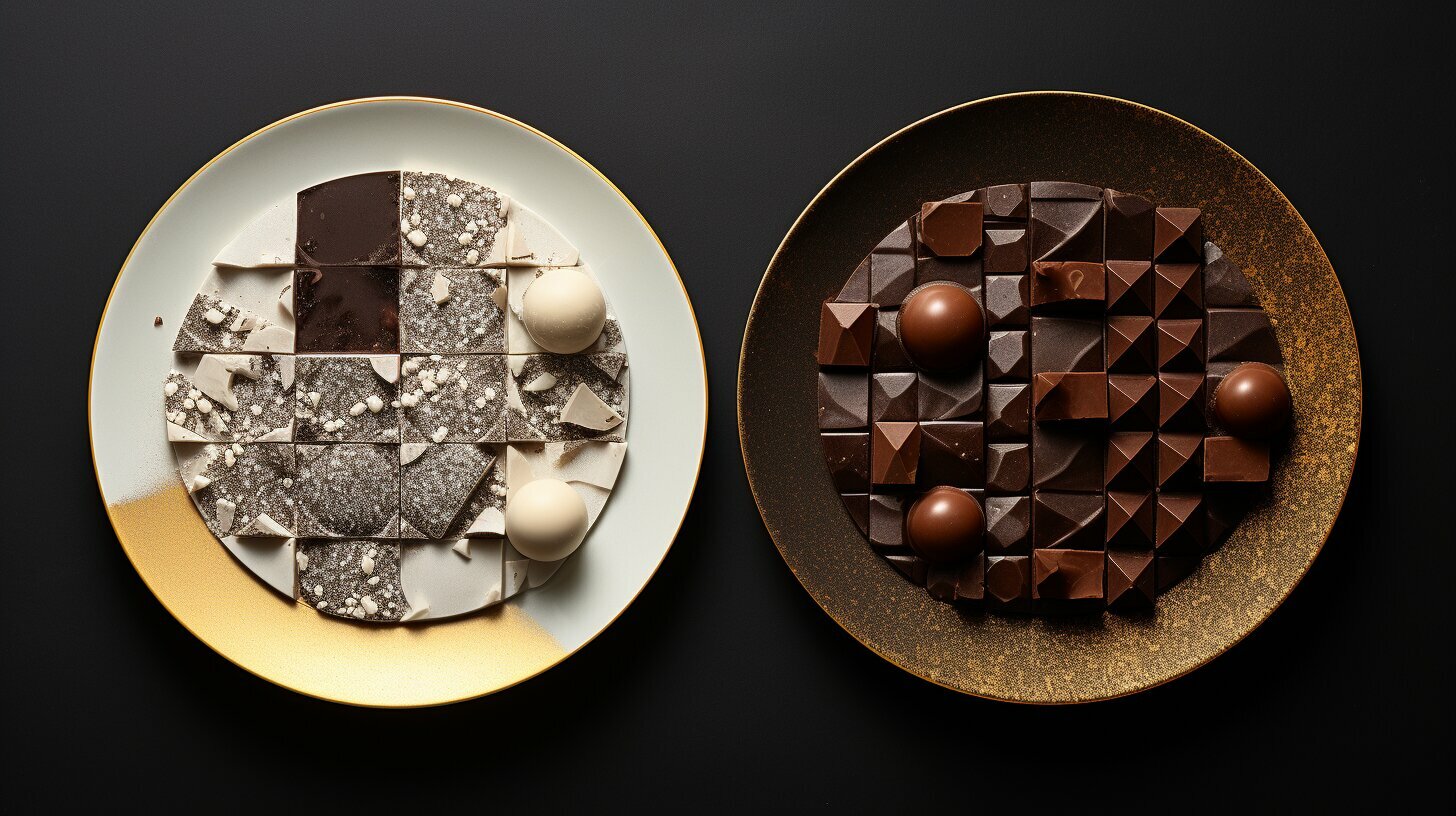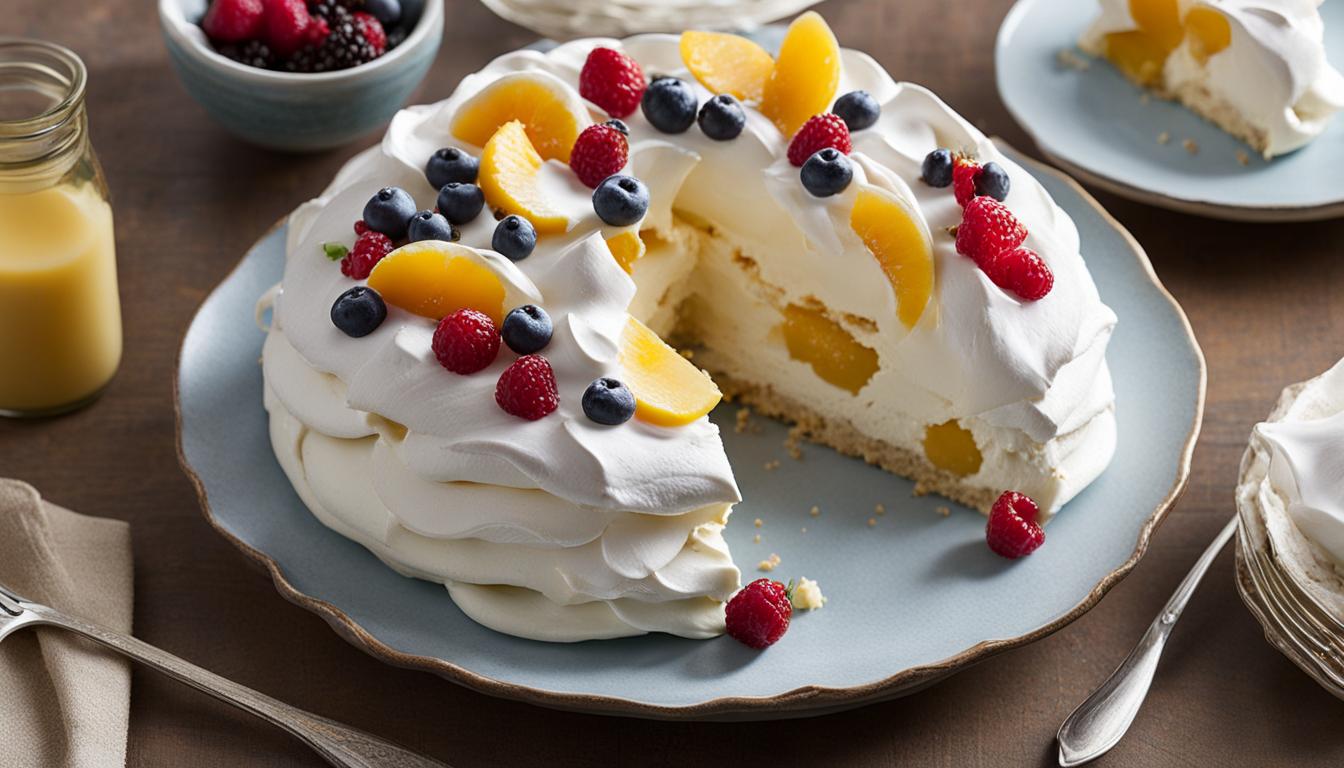In the world of delicious pastries, there are two standout treats: the croissant and the palmier. While they both offer a delightful experience for your taste buds, they have distinct differences that set them apart. From their ingredients and shapes to their origins and cultural variations, let’s explore how a croissant differs from a palmier.
Key Takeaways:
- The croissant and palmier are both delectable pastries with unique characteristics.
- Croissants are made from laminated dough with milk and yeast, resulting in a richer, higher-rise pastry.
- Palmiers are made with simpler puff pastry dough, resulting in a lighter, crispier texture.
- Croissants are known for their crescent shape, while palmiers are shaped like palm leaves or butterflies.
- Croissants originated in France, while palmiers have diverse names and variations in different countries.
Ingredients and Preparation
When it comes to the ingredients and preparation of croissants and palmiers, there are notable differences that contribute to their distinct characteristics. Croissant dough is made with a combination of flour, butter, milk, yeast, and salt. The addition of milk and yeast gives croissants a softer and more tender texture. On the other hand, palmier dough is simpler, consisting only of flour, butter, and salt. This simplicity results in a lighter and crispier pastry.
In terms of shape, croissants are well-known for their iconic crescent shape. This shape is achieved through a specific folding and rolling technique during the pastry-making process. Palmiers, on the other hand, are typically rolled into the shape of palm leaves or butterflies, adding a touch of whimsy to their appearance.
| Characteristic | Croissant | Palmier |
|---|---|---|
| Ingredients | Flour, butter, milk, yeast, salt | Flour, butter, salt |
| Preparation | Folding and rolling technique for layers | Simplified rolling technique for distinctive shape |
| Shape | Crescent | Palm leaf or butterfly |
As shown in the table above, the ingredients and preparation methods for croissants and palmiers showcase their unique characteristics. Whether you prefer the soft and rich layers of a croissant or the delicate crispness of a palmier, both pastries offer a delightful treat for pastry lovers.
Flavors and Varieties
When it comes to flavors, both croissants and palmiers offer a range of delightful options. Croissants come in various flavors, including classic plain, indulgent chocolate, nutty almond, and savory ham and cheese. These flavors can be incorporated into the filling or added as a topping, providing a diverse and satisfying taste experience.
Palmiers, on the other hand, are typically sweet pastries that are coated in sugar before baking. The sugary exterior creates a caramelized and crispy texture, while the interior remains light and flaky. In addition to the traditional sugar coating, palmiers can also be topped with other ingredients such as coconut, chocolate, or honey, depending on the country or region. Each variation adds a unique twist to the classic palmier, making it a versatile and tempting treat.
Comparison of Croissant and Palmier Flavors
| Croissant Flavors | Palmier Flavors |
|---|---|
| Plain | Sugar-coated |
| Chocolate | Coconut |
| Almond | Chocolate |
| Ham and cheese | Honey |
As shown in the comparison table above, croissants offer a wider range of flavors, including both savory and sweet options. On the other hand, palmiers focus mainly on sweet variations with different sugar coatings, but can also be enhanced with ingredients like coconut, chocolate, or honey. Whether you prefer the buttery richness of a croissant or the sugary crispiness of a palmier, both pastries promise a delightful burst of flavor.

Croissant vs Palmier: Recipes and Texture
When it comes to the recipe and texture, croissants and palmiers offer distinct experiences. Making croissants from scratch is a more complex process compared to palmiers. Croissant dough requires ingredients like flour, butter, milk, yeast, and salt. The dough is prepared and then folded with layers of butter to create the characteristic flaky texture. On the other hand, palmiers are easier to make as they only require puff pastry and sugar. The simplicity of the palmier dough results in a lighter and crispier pastry.
The texture of croissants is light, airy, and slightly chewy. The addition of milk and yeast gives croissants a softer and more tender texture compared to palmiers. In contrast, palmiers have a crispy and flaky texture with a delicate crunch. These differences in texture provide unique eating experiences for those who indulge in these delectable pastries.
Palmier Recipe:
For those interested in making palmiers at home, here is a simple recipe:
- Preheat the oven to 400°F (200°C).
- Roll out the puff pastry dough into a rectangular shape.
- Sprinkle sugar evenly over the dough.
- Starting from one long side, roll the dough tightly towards the center.
- Repeat the rolling process from the opposite side until both rolls meet in the middle.
- Chill the rolled dough in the refrigerator for 30 minutes.
- Slice the chilled dough into 1/2-inch thick pieces and place them on a baking sheet lined with parchment paper.
- Bake for 10-12 minutes or until the palmiers are golden brown and crisp.
- Allow the palmiers to cool before serving.
Cultural Variations
Croissants and palmiers have become popular pastries around the world, each with its own unique name and variation in different countries and cultures. These cultural adaptations showcase the versatility and widespread appreciation for these delightful treats.
Latin American Delights
In Mexico and several Latin American countries, palmiers are known as “orejas” or “orejitas,” which translates to “ears” in English, referring to their distinct shape. These sweet pastries are often enjoyed as a snack or dessert, and their popularity has spread across the region.

European Influences
In Spain, palmiers are called “palmeras” and can be found with various toppings, including coconut and chocolate. The Spanish adaptation of palmiers adds a delightful twist to this classic pastry. In Greece, palmiers are known as “γυαλάκια” or “little glasses,” reflecting the delicate and intricate shape of these pastries.
| Country | Palmier Name | Toppings/Variations |
|---|---|---|
| Mexico | Orejas/Orejitas | Sugar, Cinnamon |
| Spain | Palmeras | Coconut, Chocolate |
| Greece | Γυαλάκια | Plain, Powdered Sugar |
The variations in names and toppings of palmiers across different cultures reflect the adaptability and creativity of pastry enthusiasts worldwide. These cultural adaptations have allowed palmiers to become a beloved treat in various corners of the globe.
As you explore the world of croissants and palmiers, you’ll discover an array of cultural variations that add uniqueness and excitement to these delicious pastries. Whether you’re enjoying an “oreja” in Mexico or a “palmera” in Spain, each bite is a testament to the rich diversity of culinary traditions around the world.
Conclusion
In conclusion, croissants and palmiers are two distinct pastries that offer unique flavors, textures, and cultural variations. While croissants have a rich and tender texture, palmiers are light, crispy, and coated in sugar. The choice between these pastries ultimately comes down to personal preference.
Both croissants and palmiers have their own special place in the world of pastries. Croissants, with their crescent shape and buttery goodness, are a staple in French cuisine. On the other hand, palmiers, with their delicate crunch and versatile toppings, can be found in various countries and cultures, each with its own twist on the classic recipe.
Whether you are in the mood for a light and flaky treat or a more indulgent pastry, both croissants and palmiers are sure to satisfy your cravings. So, next time you’re at a bakery or planning to bake at home, why not try both and discover the distinct qualities and pleasures each pastry has to offer?
FAQ
What is the difference between a croissant and a palmier?
While both pastries are made from laminated dough, croissants contain milk and yeast for a richer and higher rise, while palmiers are made with simpler puff pastry dough. Croissants are crescent-shaped, while palmiers are shaped like palm leaves or butterflies.
How are croissants and palmiers made?
Croissant dough is made with flour, butter, milk, yeast, and salt. The dough is folded with layers of butter to create a flaky texture. Palmiers, on the other hand, are made with puff pastry, which consists of flour, butter, and salt. They are rolled and sliced before baking.
What flavors can croissants and palmiers come in?
Croissants come in a variety of flavors such as plain, chocolate, almond, and ham and cheese. They can be filled or topped with different ingredients. Palmiers are usually sweet and coated in sugar, but they can also be topped with coconut, chocolate, or honey depending on the region.
What is the texture of croissants and palmiers?
Croissants have a light, airy, and slightly chewy texture, while palmiers are crispy and flaky with a delicate crunch.
How do croissants and palmiers vary in different countries?
Croissants originated in France and are popular worldwide. Palmiers have different names and variations in various countries, such as palmeras in Spain, orejas or orejitas in Mexico and Latin American countries, and palmeritas in Argentina and Chile. They may also have different toppings or variations.
Which pastry is easier to make, croissants or palmiers?
Palmiers are easier to make as they only require puff pastry and sugar. Croissants require a more complex recipe and technique due to the addition of yeast and milk.
What are some cultural variations of croissants and palmiers?
Palmiers have different names in various countries, such as mariposas in Colombia and little glasses (γυαλάκια) in Greece. These cultural variations showcase the popularity and versatility of these pastries around the world.



